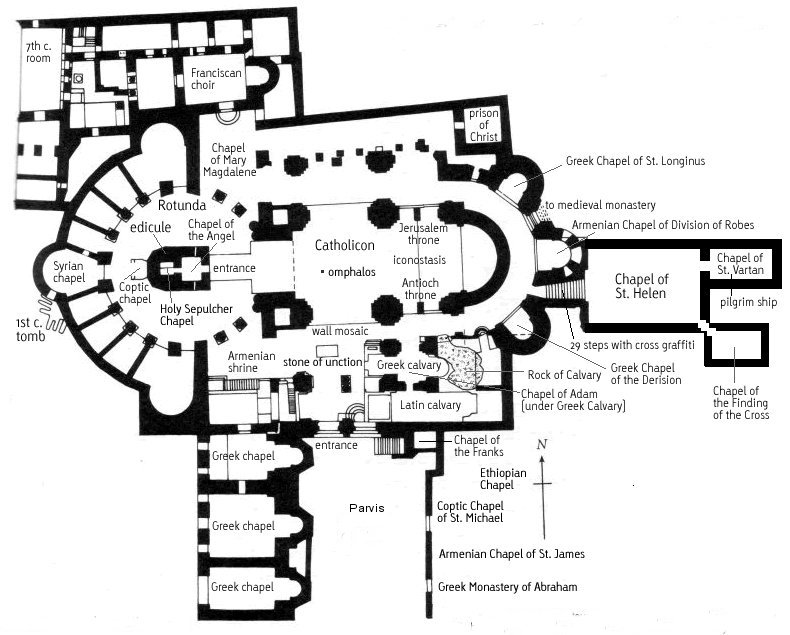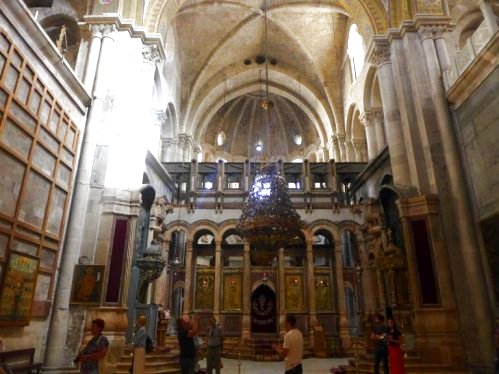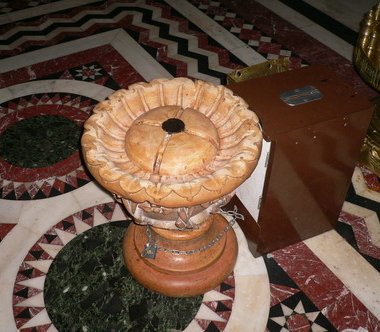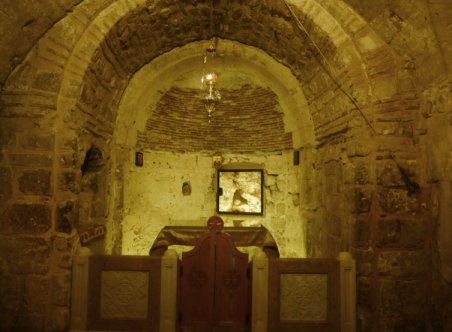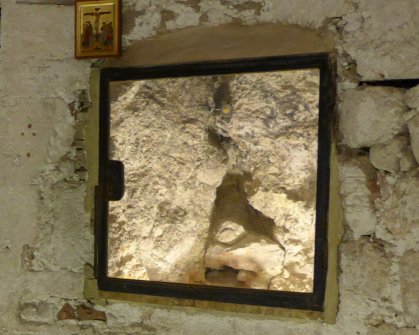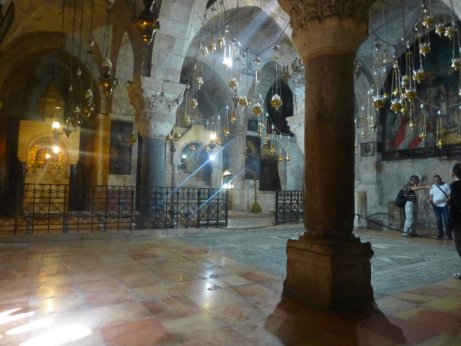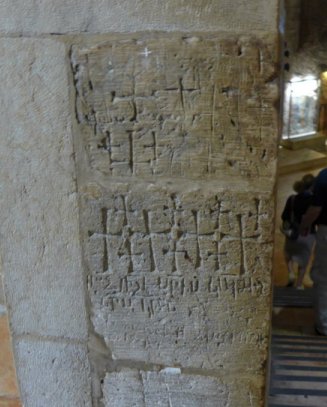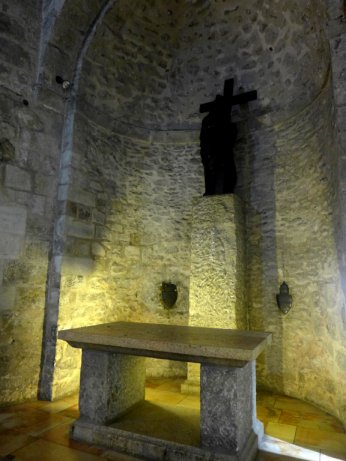|
The Church of the Holy Sepulchre - Page 2 |
|
It might be useful at this point to include a floor plan of the church. |
|
|
|
|
So far, we have entered the church past the Chapel of the Franks, turned right and climbed the steps to the Latin (Catholic) Calvary and the Greek (Orthodox) Calvary, then headed back down past the Stone of Unction and into the rotunda, to visit the Tomb of Christ in the aedicule. Let's head for the Catholicon. |
|
|
|
|
In the photograph on the left, above, we are looking at the iconostasis. The plan above appears to have got the thrones the wrong way round: The throne on the south side (right of the picture) is that of the Greek Orthodox Patriarch of Jerusalem: the throne on the north side (left of the picture) is that of the Greek Orthodox Patriarch of Antioch. The other photograph shows the compas, an omphalos or marker showing the centre of the world: omphalos is Greek for navel. Don't tell the Greeks; for them, the ompahlos is at Delphi. For the other Jerusalem faiths, it is at the Temple Mount. Of course, we know better: the omphalos is one of those stones in Wiltshire, at Stonehenge. The ambulatory, which runs around the rear of the Catholicon, has the chapel of St Longinus the chapel of the derision of Christ, and the chapel of the division of Christ's robe. Most interesting is the chapel underneath the Calvary chapels, the chapel of Adam. Traditionally, the Crucifixion took place at the spot where Adam was buried, and early representations of the Crucifixion frequently show Adans skull. Once again the earlier tradition placed this at the Temple Mount, the same place where Abraham did not sacrifice Isaac and where later Mohamed went on his miraculous journey. An alternative Jewish tradition places it at Hebron. The illuminated window at the back shows the rock of Calvary; the crack is said to signify the earthquake that occurred at the moment of Christ's death. |
|
|
|
|
| Beyond the ambulatory is the staircase leading down to underground chapels. Here, traditionally, the three crosses were found by St Helena, and the main chapel is dedicated to her. A fascinating survival is graffiti made by crusaders around the year 1100. | |
|
|
|
|
|
|
